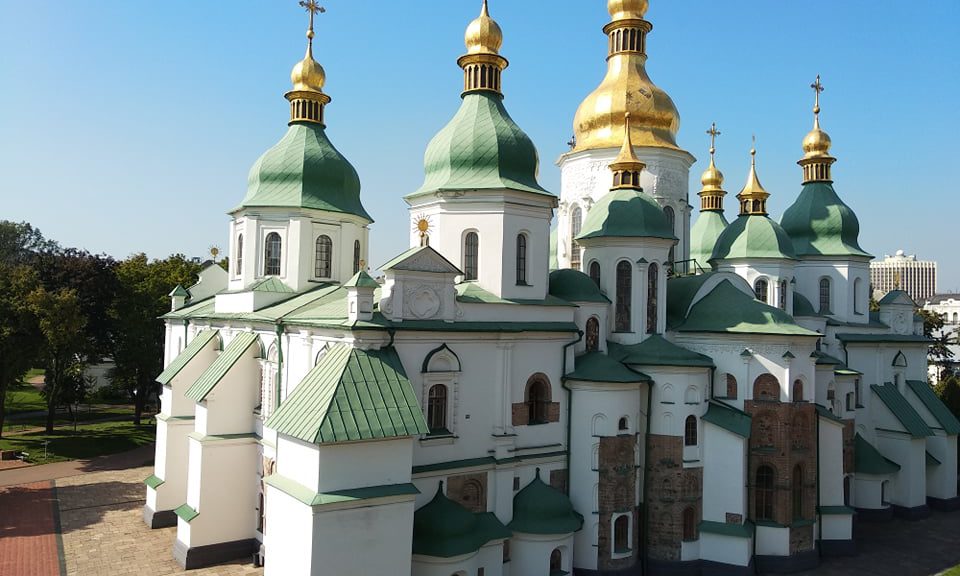
8 Popular Museums to See in Kyiv
Kyiv is one of the best cities for museumgoers where they can find over 100 state and private museums. People can learn about Ukrainian history, culture, religion, and art, enjoy new contemporary exhibitions, and visit lectures and master classes. You can spend weeks exploring museum collections on your own or book a guided tour of museums in Kyiv. If a visit to Kyiv is just for two or three days, you can visit UNESCO World Heritage Sites such as St. Sophia Cathedral and Kyiv Pechersk Lavra. Here is a list of the biggest and most interesting museums in Kyiv.
1. St. Sophia Cathedral: UNESCO World Heritage Site
St Sophia Cathedral is the oldest preserved cathedral in Ukraine, which is 1,000 years old. It keeps the largest collection of 11th-century mosaics and frescos in the world. Grand Princes Volodymyr and Yaroslav the Wise built St. Sophia Cathedral in the 11th century as the main cathedral of the city. Moreover, it became the center of political, religious, and cultural life. The Cathedral was converted into a museum in 1934, which represents architecture and art of different historical periods such as Old Rus and Byzantine styles, and Ukrainian Baroque styles. Saint Sophia Cathedral works as a museum complex as well where you can visit different exhibitions. A belfry is one of the best observation decks from where you can see a nice panoramic view of Sophia and Michael squares.

2. St. Andrew’s Church: Solemn Baroque
St. Andrew’s Church is one of the best examples of Baroque style in Ukraine designed in the middle of the 18th century by the Italian architect Bartolomeo Rastrelli. The Russian Empress Elizabeth, who was secretly married to her favorite, Ukrainian man, Oleksiy Razumovskiy, ordered the construction of the Kyiv Royal residence, which consisted of the Royal Palace and the Palace Church. Elizabeth and Razumovskiy visited Kyiv only once and did not come back; therefore, they never saw this lovely church. Now Saint Andrew’s church works as a museum where you can admire beautiful interiors and a stunning panoramic view of the lower town and the Dnipro River.
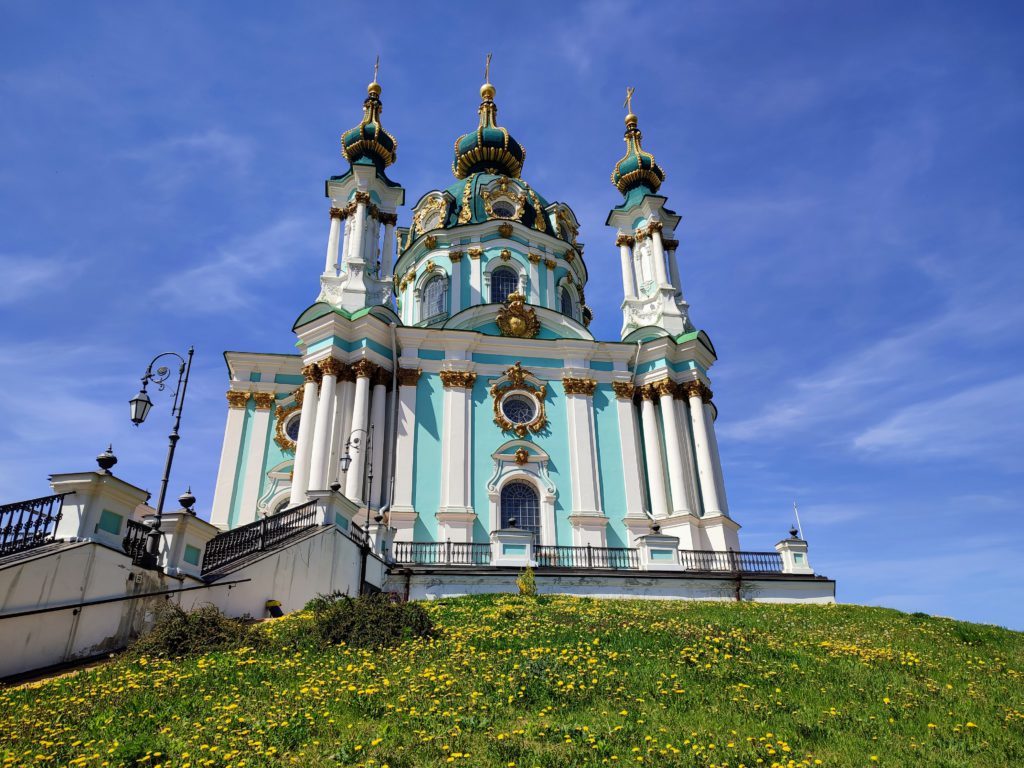
3. Kyiv Pechersk Lavra: UNESCO World Heritage Site
Kyiv Pechersk Lavra is the largest Orthodox monastery in Europe, founded in 1051 by monks Anthony and Theodosius. Now it consists of two parts: the active monastery and the historical preserve. There are many museums on its territory such as the Museum of Microminiatures, the church of the Savior at Berestove, and the Museum of Historical Treasures of Ukraine. The last one keeps a significant collection of Scythian, Sarmatia, and Slavic jewelry. The most precious item is the golden necklace called Scythian Pectoral dating back to the 6th century BC. One of the most prominent buildings is Big Lavra Belfry, which is 96 meters high. You can go upstairs and enjoy a wonderful panoramic view of the city and the Dnipro River. The entrance to the museums is paid; the price depends on how many exhibitions you want to visit. However, if you go to see only a monastery with caves (catacombs) and without museums, you can use the second entrance. It is free of charge but people have to follow the dress code. All women have to wear a scarf and a skirt, and men – long pants. Photos and videos inside of the caves and the use of lighters are prohibited.
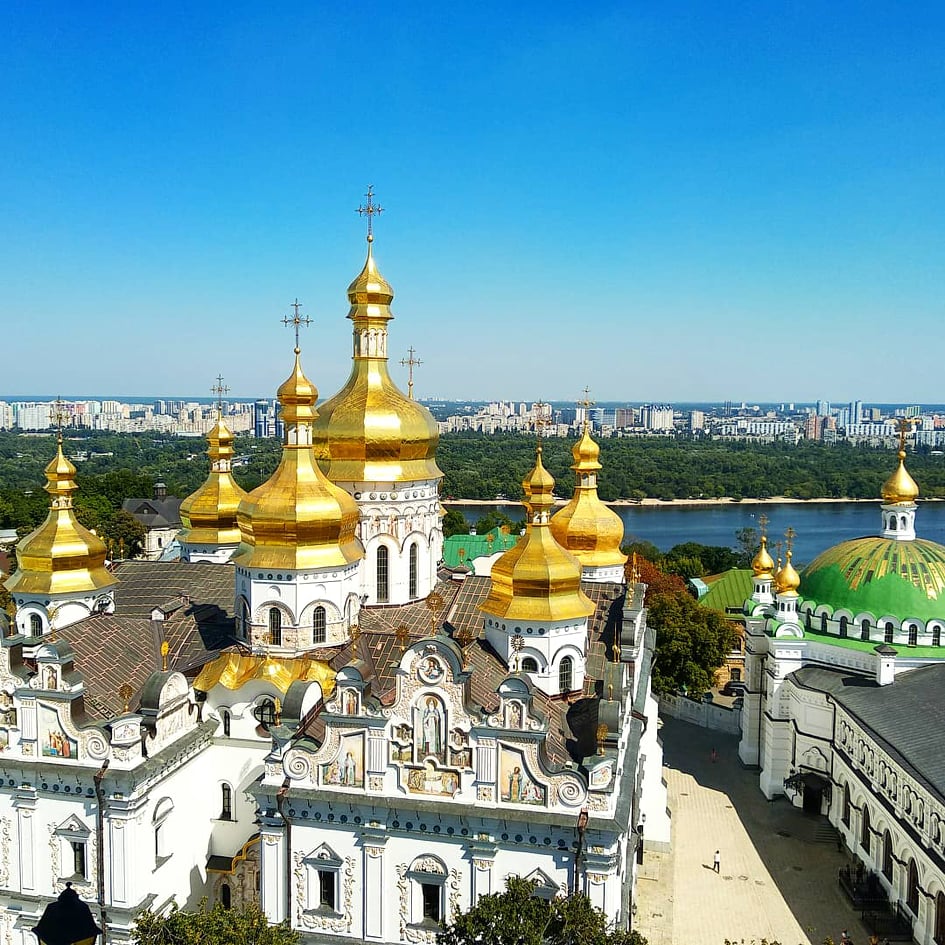
4. Museum of History of Ukraine in World War II: Never Again
One of the biggest WWII museums in Europe was opened in 1981 and occupies a territory of 10 hectares on a high hill near the Dnipro River. The Motherland Statue, 102 meters high tops the museum. There are two observation decks 36,6 and 91 meters high from where you can see breathtaking views. The collection of the Museum of History of Ukraine in WWII consists of 400,000 exhibits, which describe different periods of the war. The museum’s mission is to present a comprehensive view of the greatest military conflict of humankind and the Nazi-Soviet struggle. In addition, you can see exhibitions about the Russian-Ukrainian war, which started in 2014 and lasts until now. There are several temporary exhibitions as well as debris from destroyed Russian military vehicles.
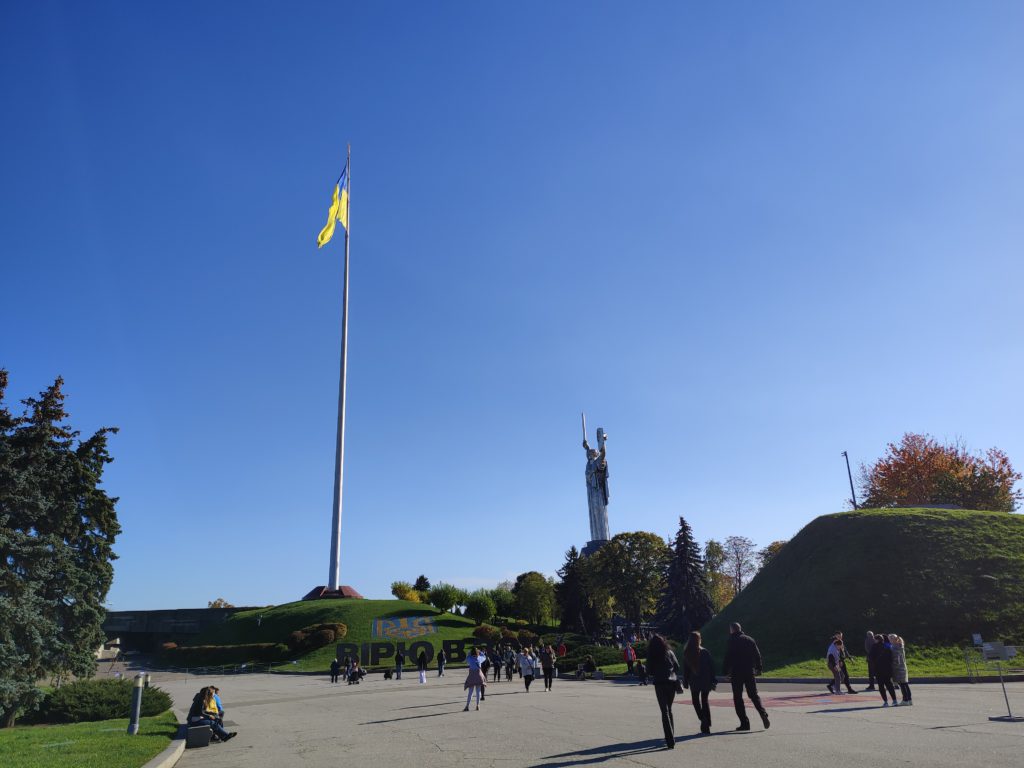
5. The National Art Museum
The National Art Museum is one of the oldest and largest art museums in Ukraine. It maintains a big collection of Ukrainian art from different historical periods from the 12th to 21st centuries, including a big collection of icon paintings from the 12th-18th centuries. You can admire the paintings of Ukrainian artists such as Oleksandr Murashko, Mykola Pymonenko, Fedir Krychevskiy, and others. The museum is located in a beautiful house built in 1899 by a well-known architect Vladyslav Gorodetskiy. The main collection has been evacuated due to the war precautions. Nevertheless, the visitors can admire different contemporary exhibitions and virtual tours.

6. The National Museum of History of Ukraine: From Past to Present
The historical museum is located in the city center, on a high Old Kyiv Hill, not far from St. Andrew’s church. It is the leading museum and scientific complex in Ukraine, which keeps a collection of over 800,000 exhibits. You can see archeological, ethnographical, weapon, and numismatic collections, which show Ukrainian history from prehistoric times to these days. After the beginning of the full-scale Russian invasion on February 24, 2022, the main collection was evacuated. Instead, the National Museum of History of Ukraine proposes different temporary exhibitions about the history and modern times, for example, the “Struggle for Independence of Ukraine”, “The Invasion, Kyiv Shot”, “The Flags of Independence”, “Azovstal: New Senses” etc.
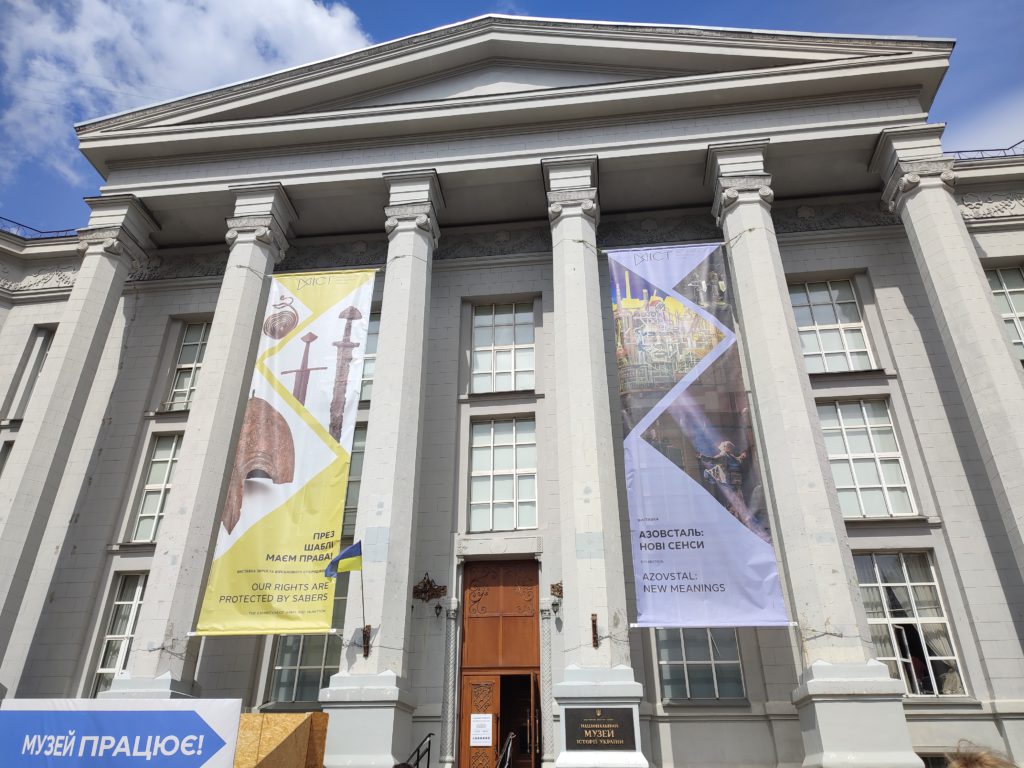
7. Museum of the Holodomor-Genocide
The National Museum of the Golodomor-Genocide works as both a museum and a memorial complex to honor the victims of one of the biggest tragedies in Ukrainian history – the Famine of 1933. In other terms, in Ukrainian language the famine sounds like the Holodomor, which means killing by starvation. When the Soviet regime launched the politics of industrialization and collectivization, many Ukrainians refused to work for collective farms because traditional individual farming was more popular than collective work. That is why the Soviet government started struggling with middle-class peasants and created artificial famine. Over four and a half million Ukrainians died of starvation. Twenty-eight countries recognized the bloody events of 1933 in Ukraine as genocide. The main mission of the museum is to warn the world society from repeating the crime against humanity.
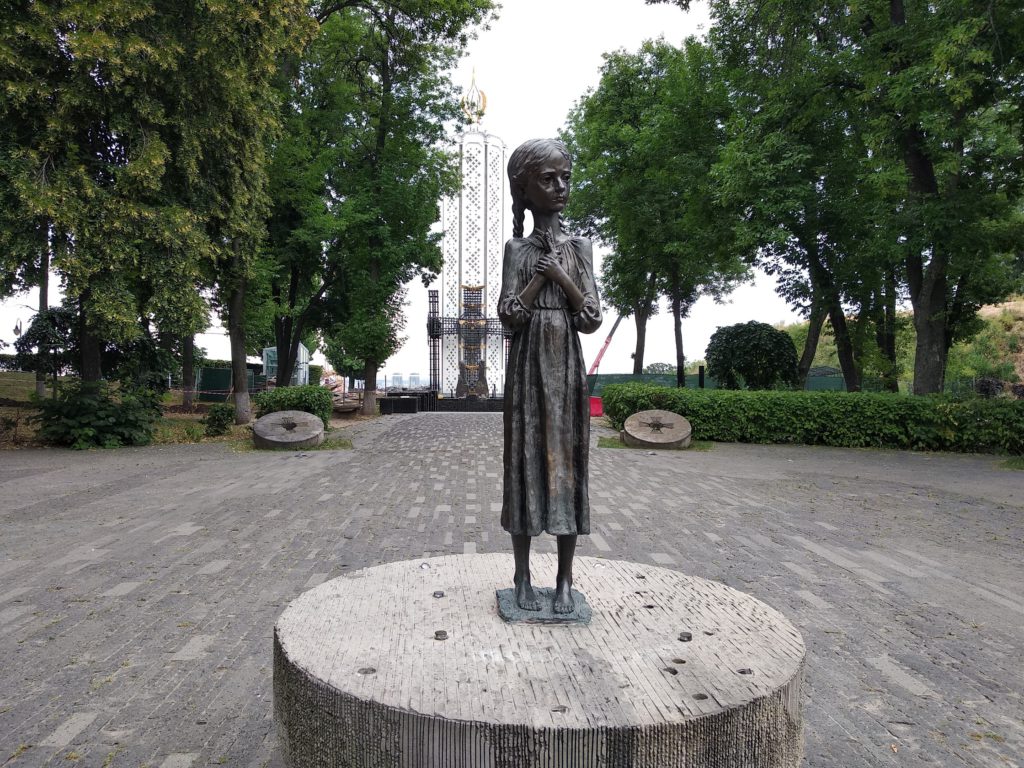
8. Museum of Euro Maidan Revolution: Struggle for Freedom
Euro Maidan Revolution or Revolution of Dignity in 2013-2014 radically changed the course of Ukraine’s modern history. During the revolution, a group of enthusiastic people who understood the importance of this social phenomenon started collecting photos, videos, things, and documents related to current events. Later, they created the concept of the museum and memorial complex aimed to preserve and spread ideas of the Ukrainian struggle for independence. The complex of Heavenly Hundred Heroes Avenue consists of a memorial, a museum, and an education center. For example, of special interest is a multimedia project “The Territory of Dignity in Augmented Reality” where you can use QR codes to learn about ten key locations of the revolution.
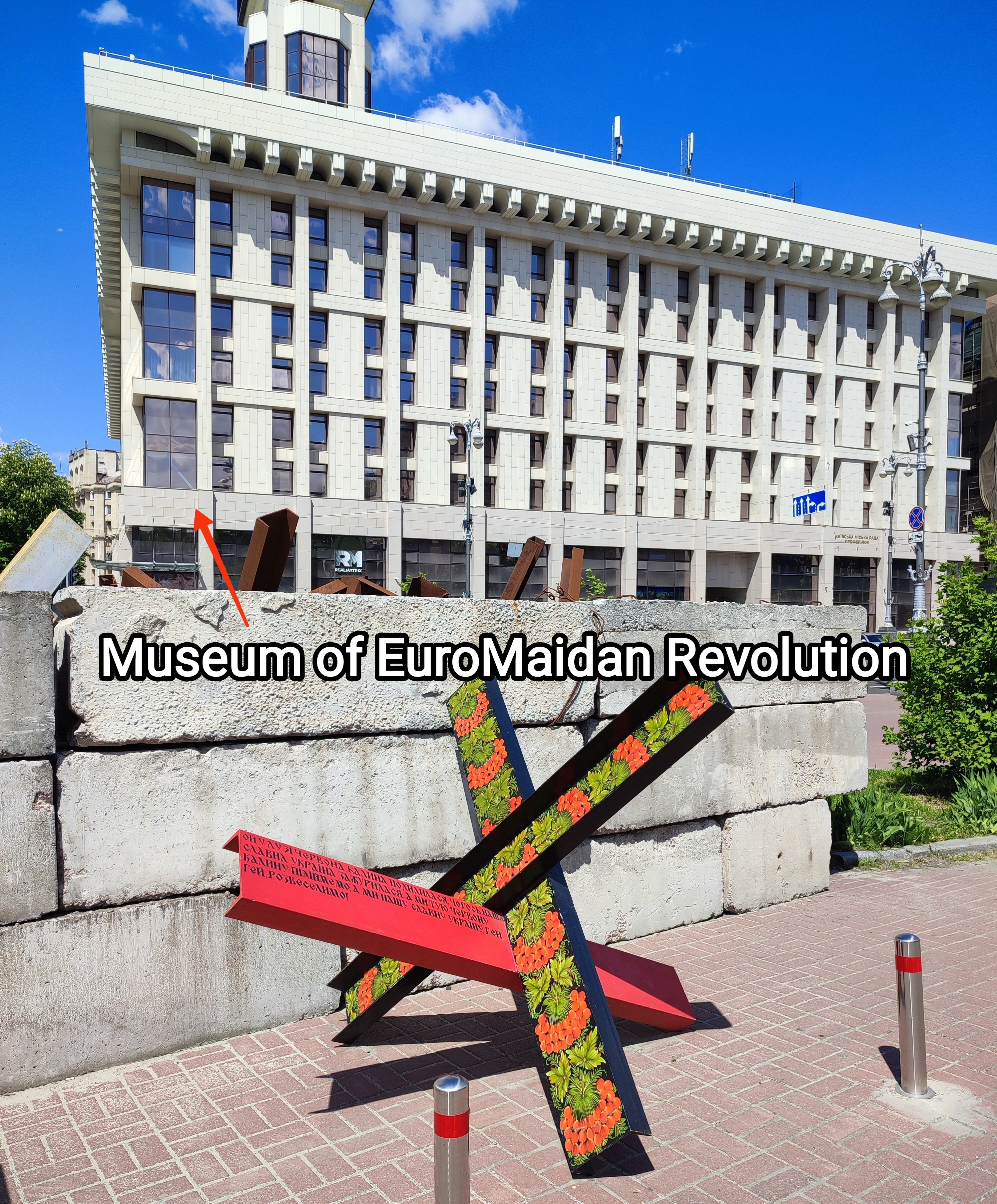
Follow my Instagram travel blog Tour Guide Kyiv Ukraine to find out more pictures and info about tours to Ukraine.